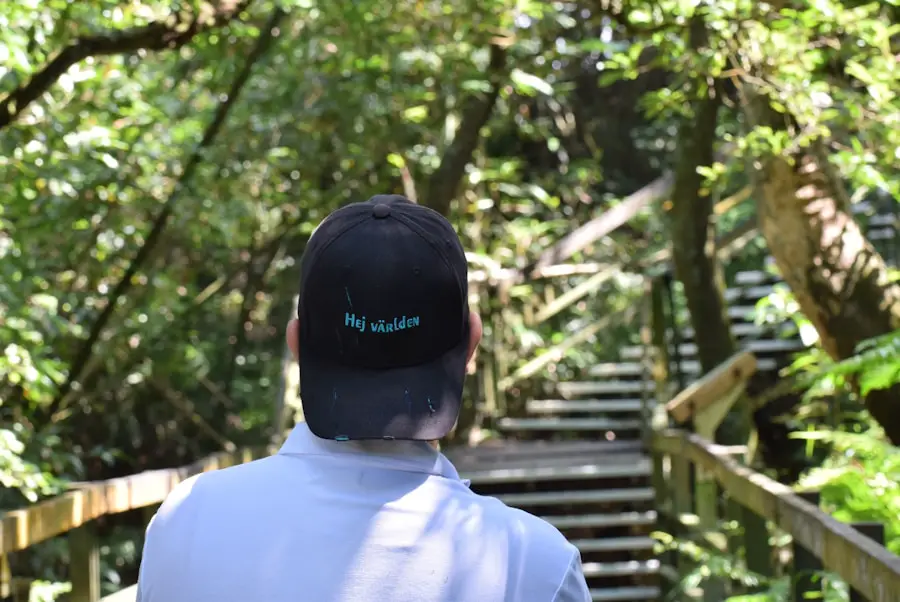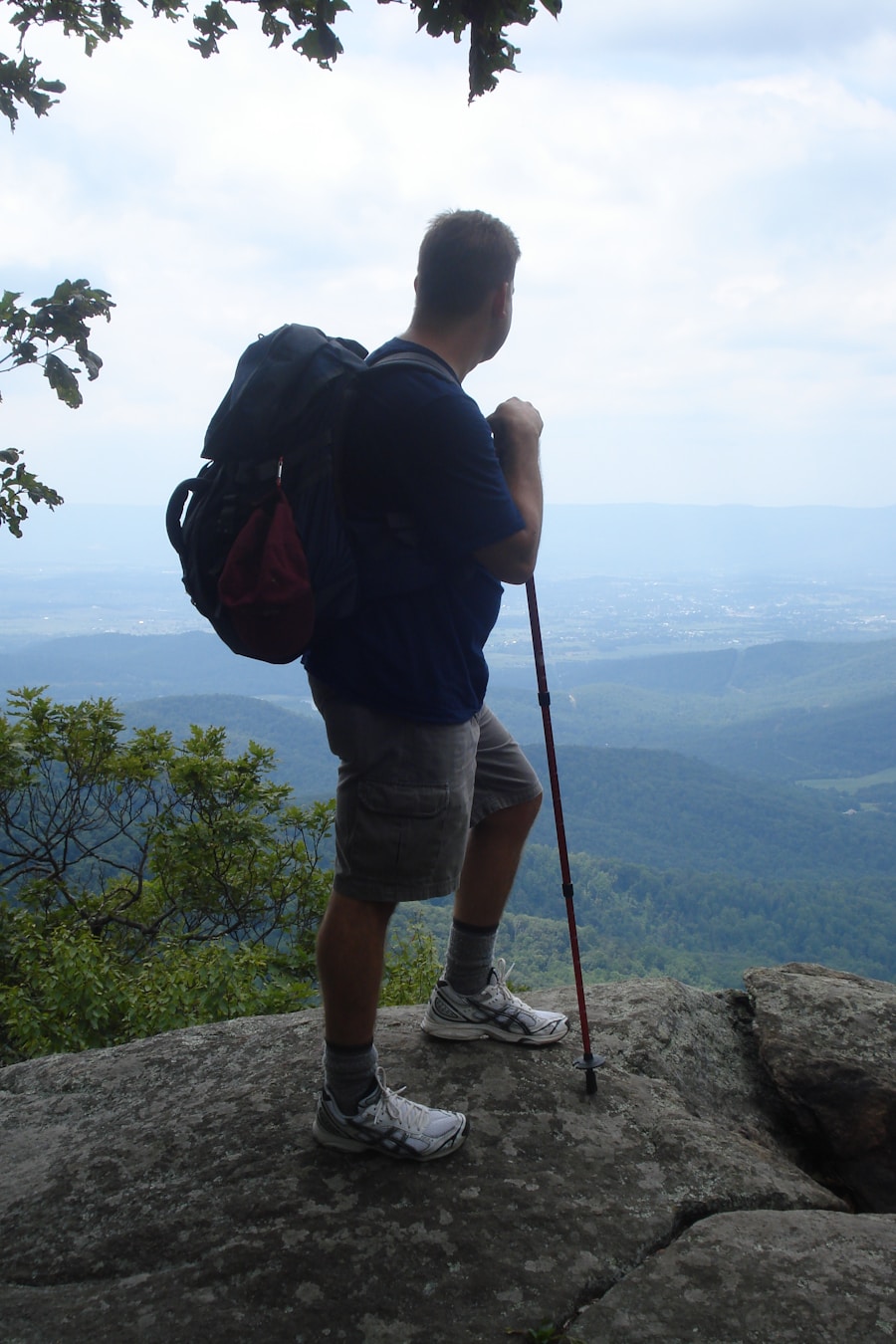Nobo hiking, a term derived from the phrase “northbound,” refers to a specific style of long-distance hiking where individuals traverse trails from south to north. This approach is particularly popular on iconic routes such as the Appalachian Trail (AT) and the Pacific Crest Trail (PCT), where hikers embark on a journey that often spans several months. The allure of Nobo hiking lies not only in the physical challenge it presents but also in the profound connection it fosters with nature and the self.
As hikers navigate through diverse landscapes, they encounter a variety of ecosystems, climates, and communities, each contributing to the rich tapestry of their journey. The Nobo hiking experience is characterized by a unique rhythm, where each step taken is a step toward personal growth and discovery. Hikers often find themselves immersed in the beauty of their surroundings, from towering mountains to serene forests, while also facing the mental and physical challenges that come with long-distance trekking.
This journey is not merely about reaching a destination; it is about the experiences, friendships, and lessons learned along the way. The Nobo trail community is vibrant and supportive, with fellow hikers often sharing tips, stories, and encouragement, creating bonds that can last a lifetime.
Key Takeaways
- Nobo hiking direction refers to hiking from south to north, typically along long-distance trails such as the Appalachian Trail or Pacific Crest Trail.
- Nobo hiking has a rich history and tradition, with many hikers following in the footsteps of those who have gone before them.
- Understanding the logistics of Nobo hiking, including resupply points, trail towns, and transportation, is crucial for a successful journey.
- Nobo hiking offers benefits such as experiencing changing landscapes and seasons, but also presents challenges like harsh weather and limited daylight hours.
- Choosing the right gear for Nobo hiking is essential, including lightweight and durable equipment for long-distance travel.
The History and Tradition of Nobo Hiking
The Birth of a Tradition
The Appalachian Trail, established in 1923, was one of the first major long-distance hiking trails and has since become synonymous with the Nobo hiking experience. Early hikers sought not only adventure but also a deeper connection with nature, echoing the sentiments of transcendentalists like Henry David Thoreau and John Muir, who championed the importance of wilderness preservation and personal reflection in natural settings.
A Rite of Passage
As the years progressed, Nobo hiking evolved into a rite of passage for many outdoor enthusiasts. The 1970s and 1980s saw a surge in interest in long-distance hiking, fueled by a growing environmental movement and an increasing desire for outdoor recreation. The establishment of organizations such as the Appalachian Trail Conservancy helped promote trail maintenance and preservation, ensuring that future generations could experience the joys of Nobo hiking.
A Timeless Tradition
Today, this tradition continues to thrive, with thousands of hikers embarking on Nobo journeys each year, drawn by the promise of adventure and self-discovery.
Understanding the Logistics of Nobo Hiking

Planning a Nobo hike requires careful consideration of various logistical elements to ensure a successful journey. One of the first steps is selecting the right trail segment and determining the best time to start. For instance, many hikers begin their Nobo trek on the Appalachian Trail in early spring to take advantage of milder weather conditions and to avoid heavy snowfall in higher elevations.
Understanding seasonal weather patterns is crucial for safety and comfort throughout the hike. In addition to timing, hikers must also consider resupply points along their chosen route. The logistics of food and gear resupply can significantly impact a hiker’s experience.
Many trails have towns or designated areas where hikers can restock supplies, but these locations may be spaced far apart. Therefore, planning ahead is essential; hikers often create detailed itineraries that outline their daily mileage, anticipated resupply points, and potential camping spots. This level of preparation not only helps manage physical needs but also allows for flexibility in case of unexpected challenges such as inclement weather or injuries.
Benefits and Challenges of Nobo Hiking
| Benefits | Challenges |
|---|---|
| Opportunity for solitude and self-reflection | Isolation and loneliness |
| Physical fitness and health improvement | Physical exertion and fatigue |
| Connection with nature and wildlife | Encounters with dangerous animals |
| Reduced stress and mental relaxation | Dealing with unpredictable weather |
| Personal growth and self-reliance | Navigation and survival skills required |
Nobo hiking offers numerous benefits that extend beyond physical fitness. One of the most significant advantages is the opportunity for personal growth. As hikers face various challenges—be it steep ascents, unpredictable weather, or navigating difficult terrain—they develop resilience and problem-solving skills that can translate into other areas of life.
The solitude found on remote trails often leads to introspection and self-discovery, allowing individuals to reflect on their lives and priorities. However, Nobo hiking is not without its challenges. The physical demands of long-distance trekking can lead to fatigue, injuries, or even burnout if not managed properly.
Hikers must be prepared for the mental toll as well; loneliness or homesickness can creep in during extended periods away from familiar surroundings. Additionally, navigating through diverse terrains can present unexpected obstacles such as river crossings or rocky paths that require careful attention and adaptability. Balancing these challenges with the rewards is part of what makes Nobo hiking such a transformative experience.
Choosing the Right Gear for Nobo Hiking
Selecting appropriate gear is critical for a successful Nobo hiking experience. The right equipment can make a significant difference in comfort and safety during long treks. A well-fitted backpack is essential; it should be lightweight yet spacious enough to carry all necessary supplies without causing strain on the hiker’s body.
Many experienced hikers recommend investing in high-quality gear that balances weight with durability, as this can enhance overall performance on the trail. Footwear is another crucial aspect of gear selection. Proper hiking boots or shoes should provide adequate support and traction while being comfortable for long hours of wear.
Hikers often spend considerable time breaking in their footwear before embarking on their journey to prevent blisters and discomfort. Additionally, layering clothing is vital for adapting to changing weather conditions; breathable fabrics that wick moisture away from the body are ideal for maintaining comfort during strenuous activities.
Safety Considerations for Nobo Hiking

Safety is paramount when embarking on a Nobo hike, as remote trails can present various risks. One of the most important safety measures is understanding navigation techniques. While many trails are well-marked, having a reliable map and compass or GPS device can be invaluable in case of unexpected detours or emergencies.
Hikers should familiarize themselves with their route before setting out and remain vigilant about trail markers throughout their journey. Another critical aspect of safety involves being prepared for wildlife encounters. Depending on the region, hikers may encounter bears, snakes, or other potentially dangerous animals.
Understanding how to store food properly—using bear canisters or hanging food bags—is essential for minimizing risks associated with wildlife interactions. Additionally, carrying a first aid kit equipped with essentials such as bandages, antiseptics, and pain relievers can help address minor injuries or ailments that may arise during the hike.
Environmental Impact of Nobo Hiking
The environmental impact of Nobo hiking is an important consideration for both hikers and trail management organizations. While long-distance hiking promotes appreciation for nature and encourages conservation efforts, it can also lead to ecological disturbances if not conducted responsibly. High foot traffic on popular trails can result in soil erosion, damage to vegetation, and disruption of wildlife habitats.
Therefore, practicing Leave No Trace principles is crucial for minimizing one’s footprint on these natural landscapes. Hikers are encouraged to stay on designated paths to prevent trail widening and habitat destruction. Additionally, proper waste disposal—whether through packing out trash or using designated restroom facilities—plays a significant role in preserving trail environments.
Many organizations actively promote educational initiatives aimed at raising awareness about sustainable hiking practices among trail users, emphasizing that each hiker has a responsibility to protect these cherished landscapes for future generations.
Embracing the Nobo Hiking Experience
Embracing the Nobo hiking experience means immersing oneself in a journey that transcends mere physical activity; it becomes an exploration of self and nature intertwined. Each step taken along these trails offers opportunities for connection—both with fellow hikers and with the environment itself. The challenges faced along the way serve as catalysts for personal growth, fostering resilience and adaptability that extend beyond the trail.
As more individuals embark on Nobo hikes each year, it becomes increasingly important to approach these adventures with mindfulness and respect for nature. By understanding the history, logistics, benefits, challenges, gear requirements, safety considerations, and environmental impacts associated with Nobo hiking, enthusiasts can fully appreciate this unique outdoor experience while contributing positively to the preservation of our natural world.
If you’re interested in hiking lingo like “nobo,” you may also enjoy reading about the best time to travel to Tennessee in this guide. This article provides valuable information on when to visit Tennessee to make the most of your trip and enjoy all that the state has to offer.
FAQs
What does NOBO mean in hiking?
NOBO stands for “northbound” and is used to describe a hiking or backpacking journey that is headed in a northward direction along a trail or long-distance route.
Why is NOBO used in hiking?
NOBO is used in hiking to provide clarity and direction when discussing long-distance trails, such as the Appalachian Trail or the Pacific Crest Trail, which have designated starting and ending points. Using NOBO helps hikers and trail enthusiasts understand the direction of travel.
Are there other directional terms used in hiking?
Yes, in addition to NOBO, there are other directional terms used in hiking, such as SOBO (southbound), EBO (eastbound), and WBO (westbound). These terms help hikers and trail users communicate the direction of their journey along a specific trail or route.
How is NOBO different from SOBO in hiking?
NOBO and SOBO are directional terms used in hiking to indicate the direction of travel along a specific trail or route. NOBO means “northbound,” while SOBO means “southbound.” The choice of direction depends on the specific trail and the hiker’s personal preference.
Is NOBO used internationally in hiking?
While NOBO is commonly used in the United States for trails like the Appalachian Trail and the Pacific Crest Trail, it may not be as widely used internationally. Different countries and regions may have their own directional terms for hiking trails.
